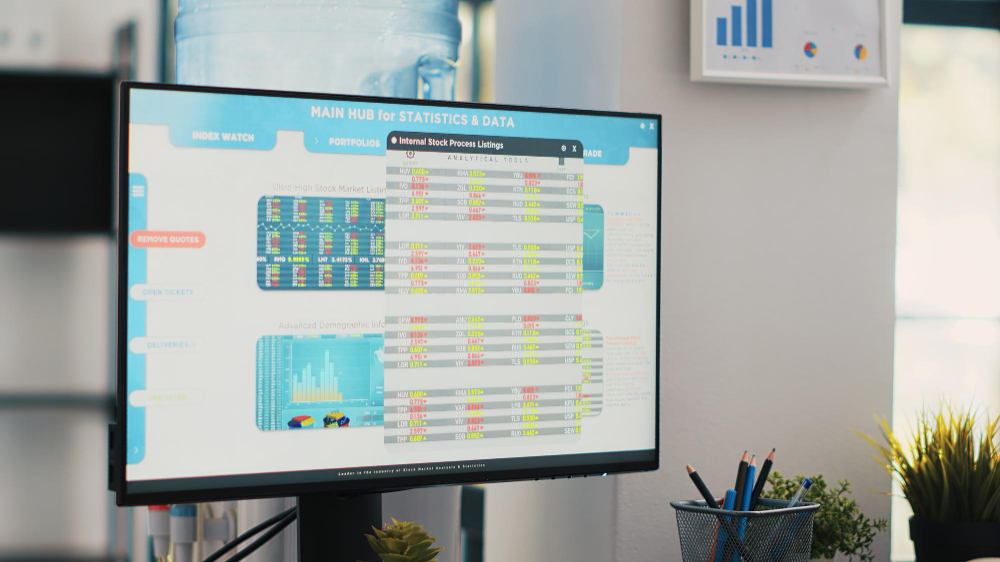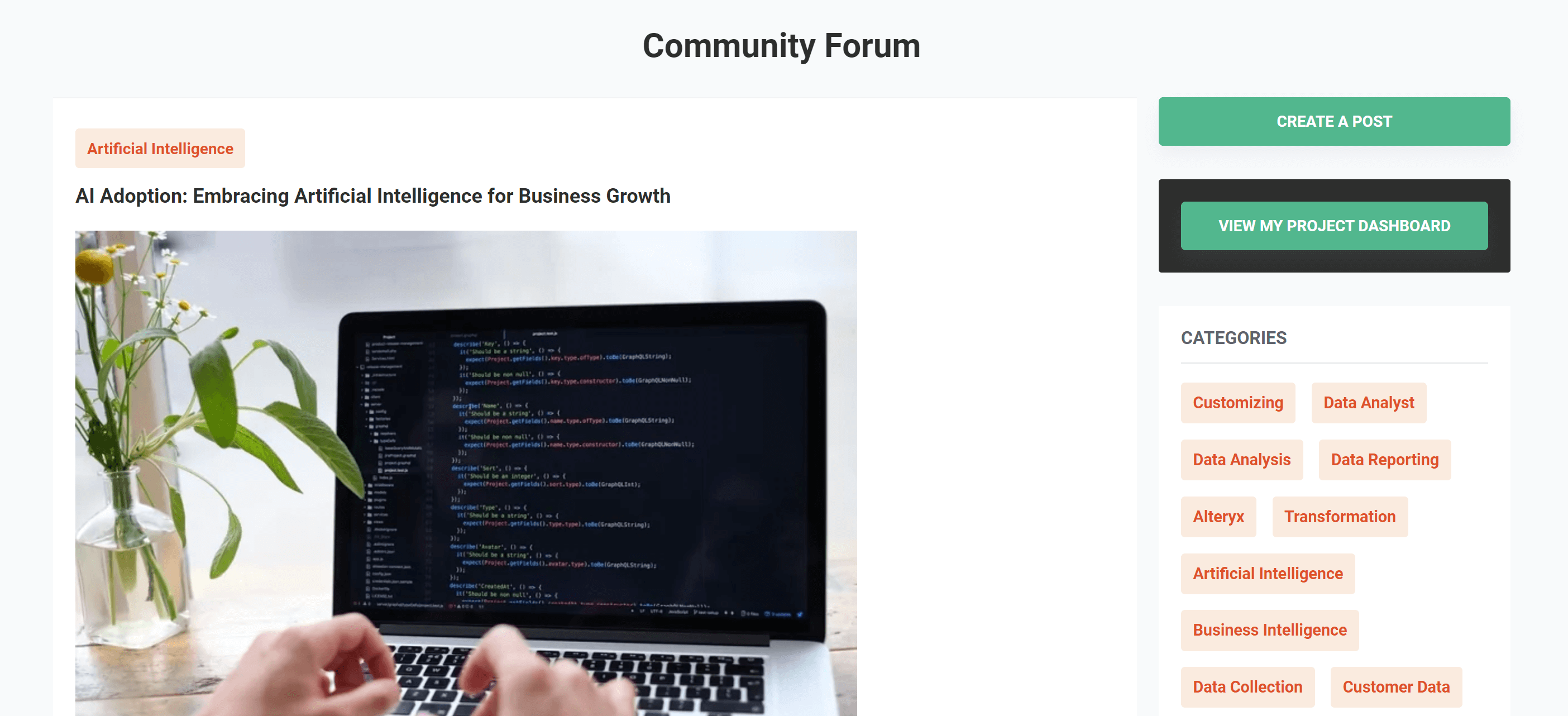Unlocking the Potential Of Tableau for Data Scientist

Data scientists are the masters of wrangling complex information, but translating those insights into clear, understandable stories can be a challenge. This is where Tableau steps in. It’s a powerful data visualisation tool that transforms raw numbers into interactive dashboards and stunning charts.
Imagine instead of lengthy reports, you can present your findings in a way that resonates with everyone, from technical experts to executives. Tableau empowers you to highlight trends, uncover hidden patterns, and bring your data to life. With Tableau, you can become a data storytelling rockstar, ensuring your insights have the impact they deserve.
Unveiling the Power of Tableau
Tableau is a software application designed to transform raw data into impactful and understandable visualisations. It empowers users across various fields, including data scientists, business analysts, and marketers, to unlock the stories hidden within their data.
Here’s a breakdown of Tableau’s core functionalities:
- Effortless Data Connection: Tableau connects to a wide range of data sources, acting as a bridge between spreadsheets, databases, cloud storage platforms, and even Big Data sources.
- Drag-and-Drop Interface: Forget complex coding. Tableau boasts a user-friendly interface that allows you to create charts, graphs, and dashboards with a simple drag-and-drop motion.
- Interactive Visualisations: Move beyond static reports. Tableau’s visualisations are interactive, allowing users to filter data, drill down into specific areas of interest, and uncover hidden patterns through exploration.
- Data Storytelling Powerhouse: With a variety of chart types, colours, and layouts, Tableau empowers you to craft compelling data stories. You can present insights in a way that resonates with your audience, regardless of their technical background.
- Collaboration Made Easy: Share your visualisations with colleagues and stakeholders. Tableau fosters collaboration by allowing them to interact with the data directly, ask questions, and gain a deeper understanding of the information.
Key Features for Deeper Exploration:
- Rapid Prototyping: Experiment with different visualisations quickly using the drag-and-drop interface. This allows for faster iteration and refinement of your data story before finalising a presentation.
- Advanced Analytics Integration: Tableau integrates seamlessly with popular statistical software like R and Python. You can conduct complex analyses and effortlessly incorporate them into your visualisations for a holistic view.
- Custom Calculations: Go beyond basic charts. Tableau allows you to create custom calculations within the platform, tailoring dashboards to address specific questions or industry needs.
- Data Blending: Combine data from disparate sources to create a more comprehensive view. This can reveal hidden patterns and relationships that might be missed when analysing data in silos.
Tableau empowers users to not only see their data but to understand it in a whole new light. It simplifies communication by making complex information accessible to everyone, fostering data-driven decision making across various industries.
How Tableau Connects Data Science Insights with Action
Data science is a powerful field, uncovering hidden truths within mountains of data. But raw insights are only half the battle. The true value lies in translating those findings into actionable steps that drive real-world change. This is where Tableau steps in, acting as a bridge between the brilliance of data science and the power of informed decision-making.
From Insights to Actionable Visualisations
Data scientists excel at extracting knowledge from data, but presenting those findings in a way that resonates with stakeholders can be a challenge. Tableau steps in, transforming complex analyses into clear and interactive visualisations. Here’s how it fosters action:
- Interactive Exploration: Static reports often leave questions unanswered. Tableau’s interactive dashboards empower stakeholders to explore the data themselves, filter based on specific interests, and drill down into areas that pique their curiosity. This exploration fosters a deeper understanding and sparks discussions that lead to actionable ideas.
- Clear Communication of Trends and Relationships: Tableau allows data scientists to showcase trends, patterns, and correlations within the data through effective visualizations. Stakeholders can easily see the “why” behind the numbers, making them more likely to buy into data-driven recommendations.
- Data Storytelling that Drives Action: With a variety of chart types, colors, and layouts, Tableau empowers data scientists to craft compelling data stories. They can highlight key findings, showcase potential outcomes, and ultimately, persuade stakeholders to take action based on the insights revealed.
Collaboration is Key
Tableau fosters collaboration between data scientists and stakeholders by creating a shared platform for data exploration. Here’s how it facilitates action:
- Shared Understanding: When everyone involved can interact with the same visualisations, it creates a common ground for discussion. Stakeholders can ask questions, propose solutions, and work together with data scientists to translate insights into actionable steps.
- Real-Time Feedback: Tableau allows stakeholders to provide immediate feedback on visualisations. This two-way communication ensures that data scientists are refining their findings to best address the needs and priorities of decision-makers.
- Data-Driven Decision Making: By fostering collaboration and clear communication, Tableau empowers organisations to make informed decisions based on evidence, not simply intuition. This can lead to improved strategies, optimised resource allocation, and ultimately, better outcomes.
Beyond Communication: Taking Action
Tableau goes beyond just creating visuals. It provides tools for taking concrete action:
- Scenario Planning: Tableau allows data scientists to create visualisations that explore “what-if” scenarios. Stakeholders can see the potential impact of different decisions before they are implemented, allowing for more strategic planning.
- Actionable Dashboards: Integrate data with actionable elements like links to reports or business applications. Stakeholders can delve deeper into specific areas of interest and take immediate action based on the insights presented.
- Data Democratisation: Tableau empowers a wider range of users to explore and understand data, not just data scientists. This can lead to a more data-driven culture where everyone is empowered to identify opportunities and take action based on insights.
Tableau is the missing link between the world of data science and the world of action. It empowers data scientists to transform their insights into clear, compelling narratives, fostering collaboration with stakeholders, and ultimately, driving data-driven decisions that lead to real-world change.
Average Salary of a Data Scientist with Tableau Skills
The exact average salary of a Data Scientist with Tableau skills can vary depending on several factors, including:
- Location: Salaries tend to be higher in major tech hubs and areas with a high cost of living.
- Experience: Entry-level data scientists will earn less than those with several years of experience.
- Industry: Certain industries, like finance or technology, may offer higher salaries for data scientists with specialised skills.
- Company Size: Larger companies often have the budget to offer more competitive salaries.
However, based on various job boards and salary reports, here’s a general range for the average salary of a Data Scientist with Tableau skills:
- United States: $90,000 – $150,000 USD per year
- India: ₹7,50,000 – ₹20,00,000 per year (approximately $9,375 – $25,000 USD per year)
Link-https://www.ambitionbox.com/profile/tableau-developer-salary
Conclusion
Tableau empowers data professionals to bridge the gap between complex data and impactful communication. As a Tableau developer, your skills are in high demand. You can craft interactive dashboards that drive informed decision-making, foster collaboration, and optimize business processes. Freelancers can capitalize on this demand by offering data visualization development, advanced analytics integration, and data storytelling consulting services. By continuously learning and staying updated, you’ll be well-positioned to unlock the true value of data and shape a more data-driven future.
Get your data results fast and accelerate your business performance with the insights you need today.



